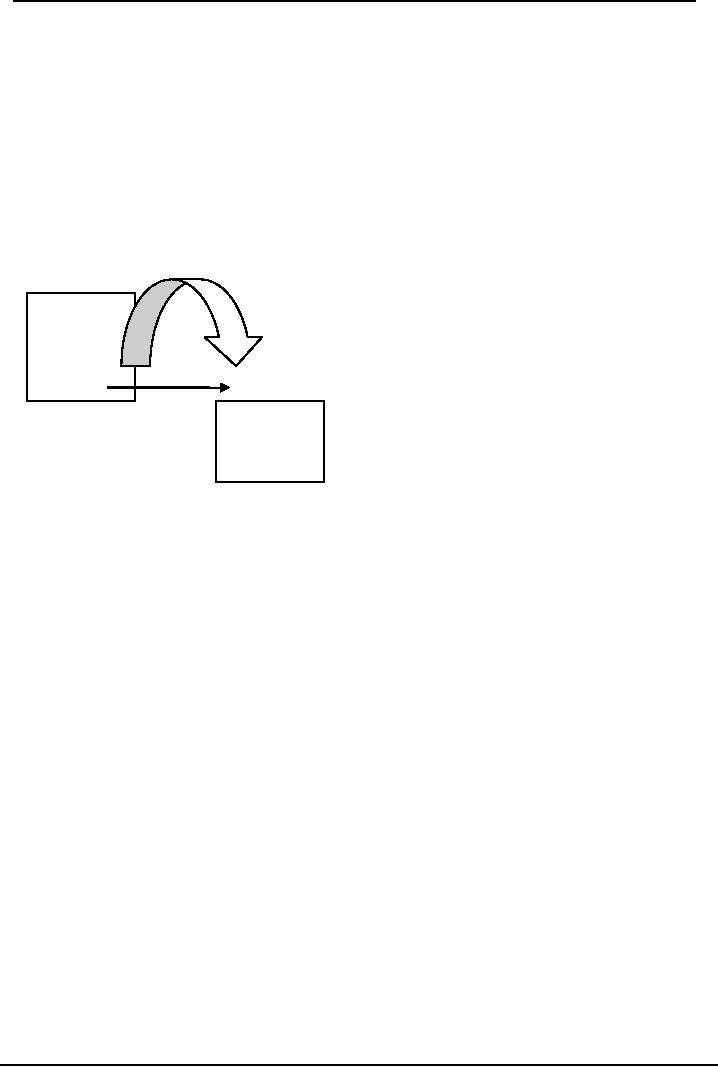 |

Neurological
Basis of Behavior (PSY -
610)
VU
Lesson44
Higher
Order Brain Functions
Objectives:
The
students would be familiarized
with the role of higher
order brain functioning in
learning, memory
and
amnesias.
Brain
correlates:
�
Brain
correlates of Learning and Memory,
Amnesia, Verbal, Non verbal
memory,
�
Famous
case of Amnesia, H.M.
Memory
is one of the puzzles where biologist,
physiologists, neurologists started
working early on
Krech
(1973) spent a lifetime
investigating memory believes
that memory is one of the most
intriguing
phenomenon.
There are many hypotheses
and there are many
frustrations for those
working in this
field.
Lashley
was pioneer in the area of
locating engrams- basically he
was a zoologist trying to locate
where
memories
are " I sometimes feel, in
reviewing the evidence on the localization of the
memory trace, that
the
necessary conclusion is that
learning is just not possible.
(Lashley 1950)
Memory
is defined as information stored in the
brain because of sensory and
other experience
(Bridgeman
1992, p324) and learning is the
acquisition of new memories.
However, where exactly is
happening
and how? Is there a specific
location or diffuse connection and
locations?
Lashley
formulated two principles: the
Principle of Equipotentiality and
Principle of Mass Action
Principle
of Equipotentiality:
Lashley
trained rats to run the
maze. The animals learned to discriminate
between the light and dark
alleys.
They were rewarded for light
alleys and punished forgoing into the
dark alleys.
Lesioning
various
parts of the brain, he found
that disruption of learning
took place after lesions of the
visual
cortex.
He reported that for
retention of visual tasks
Visual cortex important.
Various parts of
cortex
contribute
to memory at least for
complex behaviors. No one
part is more or less specialized than
other"
Neurons
within a given sensory area
is capable of participating in memory
formation- all are
equipotential
in contributing to the retention of a task.
Memories are also discretely
located within each
sensory
cortex (though diffusely
spread in that area) There
are also memories for the
specialized sensory
function.
Principle
of Mass Action:
Lashley's
rats were trained on complex
tasks utilizing information
from various sensory
modalities,
requiring
visual cues, somato-sensory
cues, kinesthetic and even
auditory cues. This involves
mass
action.
Thus, information from all
cortical areas is integrated to
form complete memories. After
the
learning
had taken place Lashley lesioned
parts of the cortex and found
that the greater the extent of the
lesion,
the greater the deficits in memory.
Retention is related to the
size of the cortical areas
removed.
Thus,
it appeared that cortical
area is not important only
the extent of damage. Therefore,
cortex works
as
a whole, the more cortex involved in
learning the better it is.
The same principle holds
for man and
for
rats. As an example, soldiers with
head bullet wounds exhibited
lower IQ on tests performance, and
the
lowering of I.Q depended
upon the overall amount of
brain damage. The amount of
remaining
cortex
is more important than the region
states Grafman and his
colleagues 1986)
There
are many more questions to memory. It is
intriguing to how we learn,
forget, how we
remember
friends,
their faces, spellings of
names or generally, telephone
numbers etc. The question is
also why
older
people remember events long
past better than immediate
past, where are our memories
located?
172

Neurological
Basis of Behavior (PSY -
610)
VU
There
are many such
questions.
�
Why
do different areas store
different part of the memory
picture, how does it get
integrated. One
piece
missing how the defect is covered, or
compensated.
In
the 1950's two different
memory storage systems, the
Short Term Memory (STM)
and the Long
Term
Memory (LTM) were hypothesized. Memories
are retained in the STM(stored
temporarily) when
the
physiological changes to store in the
long term memory are taking
place, the STM memories
are
transferred
to LTM.
Short-term
memory
repeated
thinking and
reviewing
Long-term
memory
Hebb
one of the pioneers of neurosciences and
of memory research stated
that memories remain in
STM
temporarily.
The reverberating neural
activity (neural activity,
which goes, round and
produces
structural
changes in synapses) leads to LTM
storage. Thus, the changes in neuronal
biochemical
structure
are the basis of LTM storage. He proposed
a Two-stage memory theory is supported
by
everyday
evidence that unless you keep
repeating telephone number it becomes
difficult to recall
it!
Cross
modal transfer:
It
is possible to learn with one sensory
mode and use what is learnt
and retained, in another mode.
For
example,
the visual scanning of mazes takes place,
then one can go through it
using the kinesthetic
mode.
Humans and higher primates can do that
easily but lower animals cannot transfer
information
from
one modality to another. If memories were
diffusely stored then lower
animals should also be
able
to
do the same
Problems
and Issues in testing
memories:
a)
There
is no adequate method to identify where
memories are stored, where memories
stored not
known
effectively even after so many
years of research,
b)
Performance
not memory may be affected
(if you remember there was a
famous joke that if you
cut
frog
legs the frogs forget to hop
across lines--- performance not
memory was affected by
cutting the
legs)
c)
How
do we know that connections of other
areas are not damaged by
lesions to one area? Lesion in
one
area may alter connection in
other,
d)
Lastly,
is what we assess if the loss of
memory or the loss of retrieval of
memory?
173

Neurological
Basis of Behavior (PSY -
610)
VU
Biological
Systems and
Memory:
Researches
using single cell recordings have shown
that learning changes single
cells. There are
measured
increases in calcium in neurons,
decreases in potassium flow,
increases in number of certain
synaptic
receptors, changes in RNA and proteins.
Impaired learning may be due to the
deficits in
biochemistry.
RNA:
These
are the memory code molecules.
There are qualitative and
quantitative changes in measures
of
RNA
and protein synthesis in animals, which
have learnt a task. Heredity is memory
passed on from
one
to another generation. The DNA is the
template for RNA-, which
determine the structure of
proteins.
Hyden and Colleagues (1962) trained
rats to walk on a tight rope as
compared to normals.
There
was increase in increase in RNA in
brain cell nuclei. Glassman
and colleagues (1974) showed
that
changes in RNA and proteins were found
after learning a shock
avoidance task. Shock avoidance
where
the rats had to jump onto a
platform at the sound of a buzzer,
whereas the controls had a
buzzer
but
no shock/ and or no platform to jump.
These rats were injected
with labeled Uri dine
(precursor for
RNA),
or labeled lysine (precursor for
protein), 30 minutes before the
experiment. The amount of
Uri
dines
incorporation decreased with
time i.e. RNA synthesis
decreased after training and
lysine increased
after
training. RNA coding for new
protein. Labeled Lysine
injected carried into cortex
and
hippocampus
with acquisition. Interesting experiments
have also been carried out
where rats, chicks and
other
species were trained and
learnt a task, these animals were decapitated
and their brains
homogenized
and injected into the normal
rats. It was found that the
injected animals learnt faster
than
untrained
or un-injected rats.
Protein
synthesis:
Researches
on single cell basis of
learning have indicated evidence that
Proteins synthesis is a necessary
step
in long-term memory. Proteins synthesis
modifies characteristics and properties
of neurons. Drugs
that
inhibit protein synthesis
impair LTM storage but not
STM. The increased
inhibition leads to
increased
deficits in learning (Bennet et
al, 1977). Anisomycin blocks
protein synthesis blocked
rats
memory
of location of the shock but
not the memory of location of
food!
Other
important bio-chemicals are
Cyclic Amp, ACTH, Vasopressin,
Acetylcholine and NE
Other
Influences on Learning and
memory:
Stress
interferes with learning and
retrieval of information. We all
are familiar with Blockade
before
important
paper! Electroconvulsive therapy blocks
protein synthesis
Hebb's
consolidation theory time
required for STM to LTM any
interference with consolidation
would
result
in disruption of long-term recall. If
there is a head injury then
memory of events prior to
injury
lost
(retrograde amnesia), destroyed as evidence indicates
that a small reminder brings
back memories
.In
head trauma memory returns after
delay or under
tranquilizers.
ECT
affects both long term and short-term memories:
Kalat (1980) "ECT interferes
with memories that
are
active at the time of ECS
regardless of the fact whether
formed recently or long
ago"
Plasticity
and the nervous
system
Experiments
by Hubel and weasel have shown
that anatomical changes take
place in the visual cortex
with
experiences. Horizontal goggles worn by
kittens during early period
of development lead to
firing
of
neurons when horizontal
stripes are seen as
adults.
174

Neurological
Basis of Behavior (PSY -
610)
VU
Similarly,
if one eye receives more stimulation, the
brain area for that eye is
enlarged (more neurons
respond)
Shock
to the foreleg of young kittens
led to a greatly enlarged
somato-sensory cortical area
(Increased
stimulation
led to increased areas for
responding).
Merzenich
carried out an experiment where he
joined the third and index
finger by sewing them
together,
the area for this "one"
finger becomes large. If the
thumb is removed the areas
for thumb in the
cortex
becomes smaller. MRI's
studies of violinist's brains showed
that their cortical auditory
areas
were
enlarged as compared to normals.
Super
Plasticity in growing
Brain?
There
have been studies which have shown
that an early start e.g. for
musicians, for language
proficiency,
for players, for gymnasts,
there is need to start early. As the
information, being sent to
the
sensory
cortices when learning is
taking place. In language learning, the
left hemisphere growth spurt
is
recorded
on EEG between 2-4 years of
age, and another 12-15 years
again only in the left
hemisphere.
There
is increasing research in the early
development and the neuronal stimulation,
nerve growth factor,
and
stem cell research.
Brain
correlates of Learning and
Memory, Amnesia, Verbal, Non-verbal
memory, tests
Amnesia
is a memory disorder, and patients
suffering from Amnesia have
been studied to find out
more
about
how memory works. One of the
most famous cases of amnesia
is
H.M:
pure amnesic: H.M. had
severe epileptic seizures
and for treatment of epilepsy, surgery
was
carried
out when he was 27 years
old. In addition, after the surgery he
has been in the time freeze
of
being
stuck at 27 (even 40 years later) HM
has amnesia for events
prior to surgery, and has no LTM.
He
actually
lives in the present, in STM. He
ahs no IQ loss as assessed by IQ
tests. He has been tested
for
memory
using the mirror drawing task, the
digit span test, Block
tapping memory span test,
Incomplete
pictures
test, and even eye blink Pavlovian
type conditioning response. He
has damage in the
temporal
region
and this has provided evidence of the
importance of temporal lobe
(and hippocampus) in
memory.
AMNESIA
�
Anterograde:loss
of ability to learn new
information. The amnesic can
remember events
before
surgery
or injury. The complex perceptual
motor learning abilities
however are intact in
these
patients.
Karsakoff's syndrome is the severest form
of Anterograde Amnesia, where damage
is
to
the mammilliary bodies and temporal
lobe
�
Retrograde.
This form of amnesia is
inability to remember event,
which had occurred before
brain
damage. Confabulation is creation of
pseudo memories to fill
gaps.
�
Alzheimer's
disease is one of the major
diseases, which leads to
severe memory loss. This is
the
most
common cause of dementia ( memory and
intellectual impairment) research
has provided
evidence
of Neurofibrils, amygdloid plaques,
neural degeneration, also
reduction in ACH as the
underlying
pathology in Alzheimer's Studies on
amnesiacs have shown:
1.
Hippocampus
is not the location of Long term
memory nor is it important
for retrieval of long
term
memories
2.
It
is also not the location for
immediate memories
175

Neurological
Basis of Behavior (PSY -
610)
VU
3.
Hippocampus
is involved in transforming STM to
LTM
Studies
have also shown the importance of
mammilliary bodies, and the Dorsomedial Thalamus
in
memory.
References:
1.
Carlson N.R. (2005) Foundations of
Physiological Psychology Allyn and Bacon,
Boston
2.
Pinel, John P.J. (2003)
Biopsychology (5th edition) Allyn and Bacon
Singapore
3.
Bloom F, Nelson and Lazerson (2001),
Behavioral Neuroscience: Brain, Mind
and Behaviors (3rd
edition)
Worth Publishers New
York
4.
Bridgeman, B (1988) The
Biology of Behaviour and Mind. John
Wiley and Sons New
York
5.
Brown,T.S. and Wallace.(1980) P.M
Physiological Psychology. Academic
Press New York.
6.
Bradshaw J.L. and Mattingley, J.B.
(1995) Clinical Neuropsychology:
Behavioral and Brain
Sciences.
ACADEMIC PRESS
7.
Bridgeman, (1992) p324,
graham 354, Carlson, Brown and
Wallace 474, Pinel
268
176
Table of Contents:
- INTRODUCTION:Descriptive, Experimental and/ or Natural Studies
- BRIEF HISTORICAL REVIEW:Roots of Behavioural Neurosciences
- SUB-SPECIALIZATIONS WITHIN THE BEHAVIORAL NEUROSCIENCES
- RESEARCH IN BEHAVIOURAL NEUROSCIENCES:Animal Subjects, Experimental Method
- EVOLUTIONARY AND GENETIC BASIS OF BEHAVIOUR:Species specific
- EVOLUTIONARY AND GENETIC BASIS OF BEHAVIOUR:Decent With Modification
- EVOLUTIONARY AND GENETIC BASIS OF BEHAVIOUR:Stereoscopic vision
- GENES AND EXPERIENCE:Fixed Pattern, Proteins, Genotype, Phenotypic
- GENES AND EXPERIENCE:Mendelian Genetics, DNA, Sex Influenced Traits
- GENES AND EXPERIENCE:Genetic Basis of behavior, In breeding
- GENES AND EXPERIENCE:Hybrid vigor, Chromosomal Abnormalities
- GENES AND EXPERIENCE:Behavioral Characteristics, Alcoholism
- RESEARCH METHODS AND TECHNIQUES OF ASSESSMENT OF BRAIN FUNCTION
- RESEARCH METHODS AND TECHNIQUES OF ASSESSMENT OF BRAIN FUNCTION:Activating brain
- RESEARCH METHODS AND TECHNIQUES OF ASSESSMENT OF BRAIN FUNCTION:Macro electrodes
- RESEARCH METHODS AND TECHNIQUES OF ASSESSMENT OF BRAIN FUNCTION:Water Mazes.
- DEVELOPMENT OF THE NERVOUS SYSTEM:Operation Head Start
- DEVELOPMENT OF THE NERVOUS SYSTEM:Teratology studies, Aristotle
- DEVELOPMENT OF THE NERVOUS SYSTEM:Stages of development, Neurulation
- DEVELOPMENT OF THE NERVOUS SYSTEM:Cell competition, Synaptic Rearrangement
- DEVELOPMENT OF THE NERVOUS SYSTEM:The issues still remain
- DEVELOPMENT OF THE NERVOUS SYSTEM:Post natal
- DEVELOPMENT OF THE NERVOUS SYSTEM:Oxygen level
- Basic Neuroanatomy:Brain and spinal cord, Glial cells, Oligodendrocytes
- Basic Neuroanatomy:Neuron Structure, Cell Soma, Cytoplasm, Nucleolus
- Basic Neuroanatomy:Control of molecules, Electrical charges, Proximal-distal
- Basic Neuroanatomy:Telencephalon, Mesencephalon. Myelencephalon
- Basic Neuroanatomy:Tegmentum, Substantia Nigra, MID BRAIN areas
- Basic Neuroanatomy:Diencephalon, Hypothalmus, Telencephalon, Frontal Lobe
- Basic Neurochemistry:Neurochemicals, Neuromodulator, Synaptic cleft
- Basic Neurochemistry:Changes in ionic gates, The direct method, Methods of Locating NT
- Basic Neurochemistry:Major Neurotransmitters, Mesolimbic, Metabolic degradation
- Basic Neurochemistry:Norepinephrine/ Noradrenaline, NA synthesis, Noadrenergic Pathways
- Basic Neurochemistry:NA and Feeding, NE and self stimulation: ICS
- Basic Neurochemistry:5HT and Behaviors, Serotonin and sleep, Other behaviours
- Basic Neurochemistry:ACH and Behaviors, Arousal, Drinking, Sham rage and attack
- Brain and Motivational States:Homeostasis, Temperature Regulation, Ectotherms
- Brain and Motivational States:Biological Rhythms, Circadian rhythms, Hunger/Feeding
- Brain and Motivational States:Gastric factors, Lipostatic theory, Neural Control of feeding
- Brain and Motivational States:Resting metabolic state, Individual differences
- Brain and Motivational States:Sleep and Dreams, Characteristics of sleep
- Higher Order Brain functions:Brain correlates, Language, Speech Comprehension
- Higher Order Brain functions:Aphasia and Dyslexia, Aphasias related to speech
- Higher Order Brain Functions:Principle of Mass Action, Long-term memory
- Higher Order Brain Functions:Brain correlates, Handedness, Frontal lobe